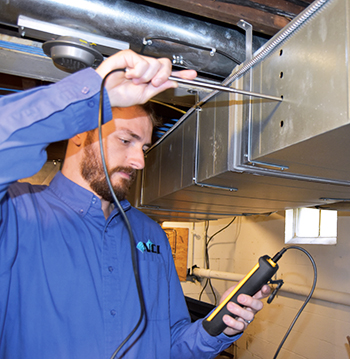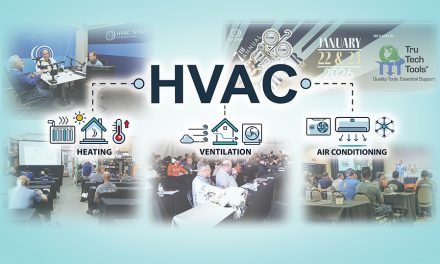Twenty-five years ago, I read an article by Rob Falke that changed my life. It was about how to add the duct system to your maintenance agreements. That single article changed how our family company did business and caused us to look past the equipment to the entire HVAC system. This shift caused us to realize the “box” was not the system.
We started with a Magnehelic and eventually adopted digital manometers to measure static pressure. Then we began estimating fan airflow using manufacturer fan tables or NCI Generic Fan Tables. Both tests helped us see the HVAC system differently than ever before.
Since then, instruments have improved, and software has made these tests and measurements much easier and faster. Because of this, there are new possibilities that didn’t exist a few years ago.
For example, now you can have measurement and testing processes in the palm of your hand, which simplifies adding a duct system to your maintenance agreement. Let’s look at how these changes can offer additional benefits when you upgrade your duct testing tools and software.

Building on Static Pressure and Airflow Measurements
Static pressure and airflow are cornerstones of airside performance. If they are wrong, the entire system is as well. Static pressure is the blood pressure of the HVAC system and can help identify overall health problems. It is a test that “screens” the airside of an HVAC system.
To measure and diagnose static pressures and airflow, a technician needs a manometer kit, static pressure budgets, and manufacturer data. They also must install test ports in the proper location and communicate measurement results to the customer and back to their company.
When the hand-off to the salesperson occurs, they must inform the customer of the test results and then choose a path of action to tackle airflow-related issues.
These skills are an art form that will remain with our industry and never disappear. But with all the other responsibilities most technicians and salespeople have, it’s easy to leave static pressure and airflow testing out.
Unfortunately, to some, it looks like just one more thing to do while on a call.
Duct System Testing Automation
One way to address overwhelming techs and salespeople is to find ways to automate their tasks. Wireless instruments from companies like The Energy Conservatory (TEC) and Fieldpiece, combined with software like MeasureQuick, are a powerful combination that simplifies many parts of the job, from data collection to diagnostics to communication.
With the advances in these test instruments and software, there are opportunities to improve how our industry handles airside testing and diagnostics. Two examples are the Duct System Screening and Duct System Analysis tests.
Click Below for the Next Page:













Recent Comments